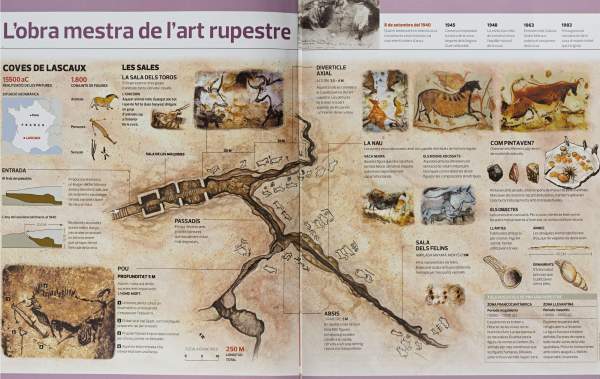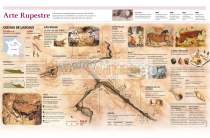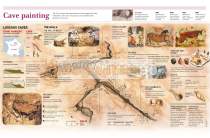Rock Art of Lascaux
Under the title of L'obra mestra de l'art rupestre (The Masterpiece of Rock Art), the popular historical magazine Sàpiens offered the infographic of the Lascaux caves in southwestern France, considered one of the most important representations of rock art. Dated 15,500 years ago, during the Magdalenian period, over 1,800 polychrome paintings of prehistoric fauna (bison, horses, bulls, deer and wild boar) appear on the ceilings and walls of its galleries. The cave was discovered by chance by four teenagers in 1940. In 1963, the French government ordered to close it to the public, since mass visits were deteriorating the paintings. To compensate this, a replica of the cave and paintings known as Lascaux II was built, located 200 m from the original site. Abbe Henri Breuil (1881-1967), a specialist in paleolithic art, was the first archaeologist to describe and investigate these paintings. Lascaux caves were declared a World Heritage Site by UNESCO in 1979. Sàpiens is published in Catalan in Barcelona and is published monthly.
Page(s): data not available



